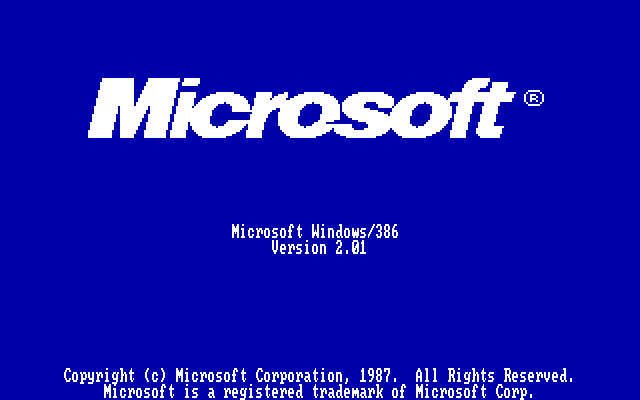This repo contains a bunch of unfinished tools to work with .LGD files, which are used to create a Windows 2.x boot screen:
To be more specific, the file consists of several null-terminated strings that contain product and copyright information, followed by a monochrome bitmap, which was seldom different from the stock Microsoft logo.
Please note that even though the Windows 1.x bootscreen looks exactly like Windows 2.x, this tool can't be used for the former, as the logo data that would have been stored inside a .LGD file in Windows 2.x is hardcoded inside the .LGO file in Windows 1.x. See the Background section for more information.
During the installation of Windows 2.x, Setup would combine WIN.CNF, which contained common Windows initialization code, a .LGO file, which contained display-specific code to display the boot screen, and the common .LGD file, which contained the boot screen resources, into a single monolithic WIN.COM (286 versions) or WIN86.COM (386 versions) executable file.
This technique of combining common and display-specific parts of WIN.COM was used also used Windows 3.x, however, the display-independent .LGD resource file was replaced by display-specific RLE-encoded bitmaps, which were decoded and rendered by code in the .LGO file. Thanks to the modular nature, it is possible to combine WIN.CNF from Windows 2.x with a .LGO file and corresponding RLE-encoded bitmap from Windows 3.x and use that to boot into Windows 2.x and vice versa.
This application accepts path to an .LGD file as a command line option and creates a text file with product and copyright information and a bitmap file containing the logo extracted from the file.
This is a WinForms application that attempts to display .LGD files (i.e. simulates the code that would have been provided in an .LGO file) in a window.
